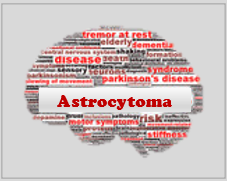
Astrocytoma
Is a brain tumour that develops from glial cells called astrocytes. Astrocytes are supporting cells of the brain that are involved in many important functions, including the regulation of brain homeostasis, the formation of blood barriers, the regulation of neurotransmission and the formation of scars after brain injury.
Astrocytomas can be of different grades, ranging from grade 1 (pilocytic astrocytoma) to grade 4 (glioblastoma multiforme). Grade is based on tumour morphology, growth rate and recurrence potential.
Astrocytoma biomarkers can help diagnose the disease, predict tumour progression and guide treatment. Here are some examples of biomarkers associated with astrocytoma:
1. IDH mutation: Mutations in the IDH1 gene are common in grade II and III astrocytomas. The presence of this mutation can help distinguish astrocytoma from glioblastoma multiforme, which has a lower IDH mutation frequency.
2. Loss of ATRX protein: Loss of ATRX protein is common in grade II and III astrocytomas and can be used to help predict patient survival.
3. EGFR protein expression: EGFR protein expression is often associated with grade III and IV astrocytomas, and can be used to guide treatment.
4. Gene expression profile: The tumour's gene expression profile can help predict astrocytoma progression and guide treatment.
5. MGMT protein level: MGMT protein level can help predict response to chemotherapy and patient survival.

